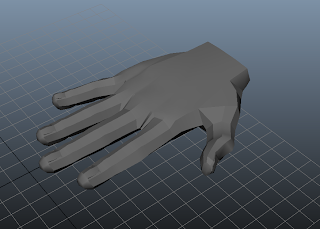Through this project I will be able to build upon the knowledge and skills I have amassed so far this year, aiming towards the goal of creating a professional showreel. My showreel will be focused on showing my desired career goal; to become an animation director. Within the showreel I also plan to incorporate what I have learnt within the progression of 3D modeling and animation. My plan for the project is to create a showreel that includes a dynamic animatic for a chosen film sequence, and to then take aspects of this showreel into Maya and create 3D character models and animation based upon this work.
Through the skilling module I have already began to develop and create a working animatic. This animatic will be used to show how I would direct a segment of a feature film if I was given the chance to. The brief given to me within the creation of the animatic was the pretend I was planning a sequence from a fictional feature film. Instead of a complete narrative, this segment would be as if the viewer has jumped straight into the middle of a film. The sequence I chose to plan was inspired by both East Asian culture, as well as Western animation style.
The animatic shows a warrior trying to progress through a dangerous mountain range, while being attacked by various monstrous foes, which she must defend herself against. The scene is set in a fictional, and Mystical, version of Japan, during the middle ages. The location for the animatic was inspired by the works of artists such as Katsushika Hokusai, whose distinctive work is synonymous with Japanese design work. As well as Asian culture, the style of the animatic (and animation within it) was inspired by western work. These influences include the work of Genndy Tartakovsky, whose quick, frantic scenes of combat in animated television shows “Samurai Jack” and “Star Wars: Clone Wars”, serve as inspiration for similar scenes within my work. Another key influence is the artwork of Jamie Hewlett, whose design work for the opera “Monkey: Journey to the West” was a clever mix of Eastern and Western culture. The main focus of the animatic will be to show the directorial style I would give to a real feature film, and I think that through an animatic I will be able to do this, without having to create a full piece of animation. The animatic is a piece I have already begun to work on through the skilling module, and one I would like to take forward.
Although my main aim of the showreel is to create a piece of work to showcase my skills as a director, I feel that I should also show my skills in 3D modeling and animation too. I have an interest in 3D animation, and by producing the animatic on its own (which will be done in 2D), I won’t be able to show this. To create a coherent theme between my 2D animatic and my 3D character model, I shall be modeling a selection of characters that appear within my animatic. These models shall include my main protagonist, and well as the antagonist of the piece. I feel that my modeling skills have progressed during the last term, and that I will be able to successfully model these two characters. As well as 3D modeling, I want to include a short piece of 3D animation within my showreel. As with modeling, I wish to keep this animation themed to my animatic. To achieve this the animation will be based upon a sequence from the animatic. For this animation I shall use a pre-existing character rig, such as Norman, as I think this will be able to show the desired effect of the animation effectively.
Through the creation of an animatic, 3D character model, and 3D character animation, I think that I shall be able to effectively produce a demo reel which is able to show my abilities of story and direction, as well as my technical abilities associated with 3D animation software.

































